
Day 4 Sunday Apr 20
SIGHTS ENJOYED
Hoi An Japanese bridge, Tan Ky ancient house, Fujian Assembly Hall/ Phước Kiến /Phuc Kien Assembly Hall, Quan Am Pagoda & Quan Cong Temple, Trung Hoa Assembly Hall, Trieu Chau Assembly Hall, Hoi An traditional lantern boat ride
Hội An Ancient town
Hoi An ancient town is spread across thirty hectares near the Thu Bon River. It thrived as a bustling trading port from the 16th to 18th centuries, connecting Europe, China, India, and Japan. This historical significance has resulted in a rich cultural blend unique to Vietnam.
the area has changed very little over the last few hundred years. Part of that is because when the French colonized Vietnam, they chose to create their own port of trade in Da Nang, to the north. That decision led to Da Nang being developed during the area’s industrial era, while Hoi An stayed the same. So Hội An retains old world charm and is a very popular area visited by all tour groups
We wanted to have an early start to avoid the tour crowds. We took a grab taxi and reached quite early
We walked into the town
The entry ticket to the Old Town of Hoi An costs 120,000 VND (about $5.21) per person. The ticket is divided into 5 detachable coupons.
This ticket grants access to 5 locations among 22 visitable tourist sites... 1 in each category
Tickets for the Old Town are only available at specific counters which are small stands scattered throughout the old district.
There are 11 sales stands located on the outskirts of Hoi An Old Town
We bought a batch of tickets and entered the ancient town. it is pedestrian only.
We had seen photographs of the whole place slammed with crowds but we had quite an exclusive experience and could savor the beauty
Japanese Covered Bridge (Chùa Cầu):
Emblematic of the city, this bridge was erected by the Japanese in 1593. Chùa Cầu was built to link the Japanese and Chinese quarters of the town, symbolizing unity and cultural harmony. It's a huge tourist attraction, It also appears on the 20,000 VND bill.
Legend goes...Namazu is a Japanese mythological monster whose movements cause earthquakes and floods. Its head is located in India, while its body is in Vietnam and its tail in Japan. The bridge was built as a magical sword to pin down Namazu’s back. Therefore, the monster could not wriggle, preventing natural disasters in Vietnam, Japan, and India. Hence, the lives of people in these three countries would go on in peace and prosperity.
The bridge is 18 meters long, connecting Tran Phu Street (the Chinese quarter) on the eastern side and Nguyen Thi Minh Khai Street (the Japanese quarter) on the western side. It crosses the Thu Bon River.
The bridge and the top were built mainly with red lacquered wood, while the base was constructed with stone. Although it is commonly called “Japanese Bridge”, the architecture is an ingenious combination of Vietnamese, Japanese and Chinese culture, from the material, design to patterns and decorations.
The bridge highlights the Japanese style with a curved roof decorated with yin and yang patterns
There are small corridors and
benches on each side of
the bridge. A unique feature of Chùa Cầu is the small temple located at its center, dedicated to the deity Tran Vo Bac De, who is believed to protect the bridge and town from floods and other misfortunes 
At the entrance and at the exit of the bridge there is a dog and a monkey respectively. They represent the guardians of the bridge, since they symbolize protection and safety in Japanese culture. It is also said that these two statues marked the beginning of the construction in the year of Monkey and the completion in the year of Dog.
Later, it was refurbished by the Chinese who established a Taoist temple on it.
The roof has interlocking yin and yang tiles. It represents the town’s era of prosperity as a bustling international trading port and the harmonious coexistence of diverse communities. Over the centuries, it has become a symbol of resilience and unity, surviving the tests of time
Tan Ky House
Tan Ky old house in Hoi An was built in 1741 as a residence, 7 generations of the same family continue living here, it was also the trading place of the local merchants as well as the foreign traders in the 18th and 19th centuries. the family members live on the top floor, the first floor is open for tourists to pay a visit.

Mother of pearl/tortoise shell inlay on wood
STREET SCENES
Couple at pre wedding shoot
Bamboo handbags
Fukian Assembly Hall (Phuc Kien)

Quan Am Pagoda & Quan Cong Temple
Incense coils with prayers by devotees
Thien Hau Holy Mother rescuing a fishing vessel

Quan Am [Goddess of Mercy]
Paintings by a talented local artist on rice paper
Koi fish pond
General Cong's horses
At the left and right sides of Quan Cong, there are two statues of his loyal guardian - General Chau Xuong (Guan Xing), and his administrative mandarin - Quan Binh (Guan Ping)
Trung Hoa Assembly Hall
DOORS WITH CARVED STORY PANELS
Another altar with carved doors
GARDEN WITH MURALS
Lovely fountain... details in the videoanother mural
Another altar with carved doors with story panels
Meeting place in the assembly hall

Trieu Chau Assembly Hall
Reception hall
Intricate carving in the altar...
DENIED ENTRY
LIT UP STREETS... CITY OF LANTERNS
TRADITIONAL LANTERN BOAT RIDE



















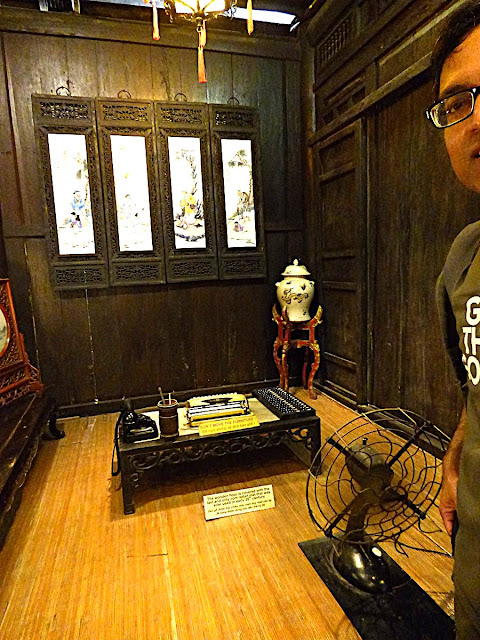
























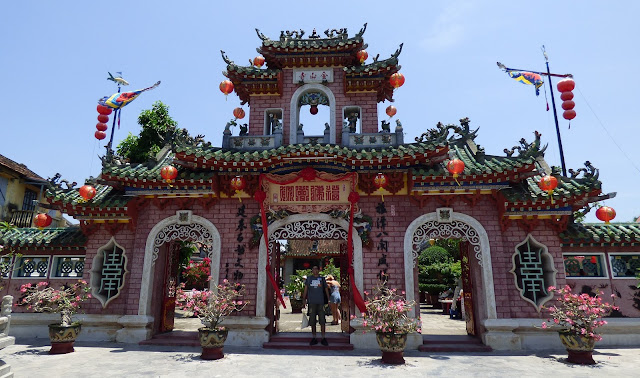





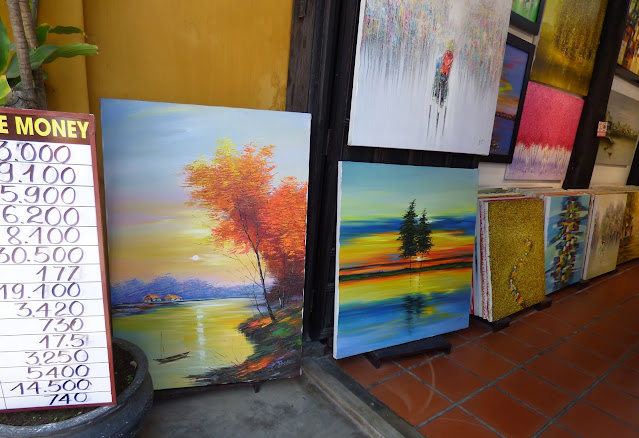






















































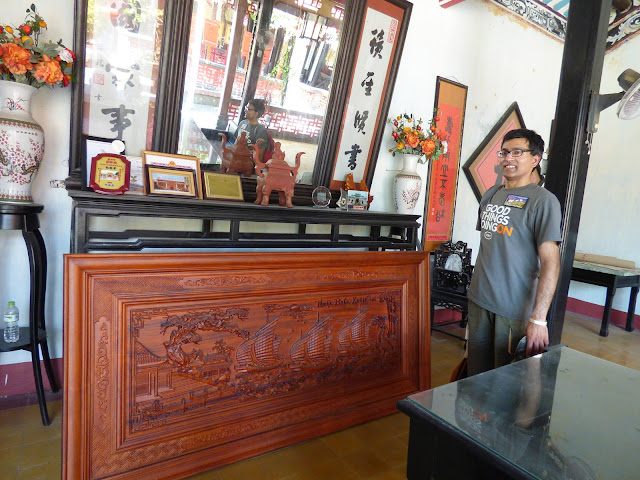










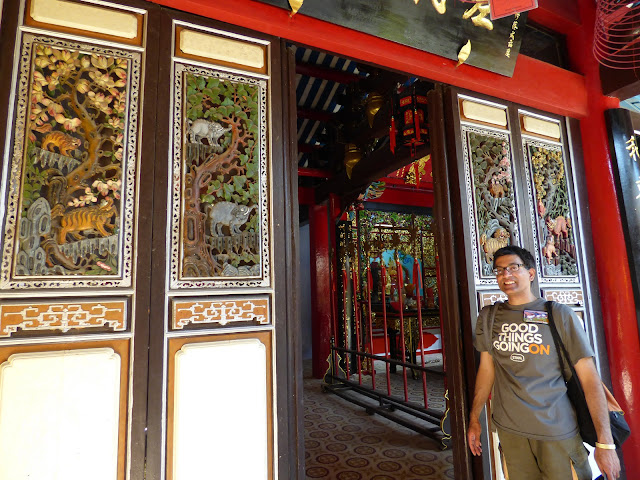























No comments:
Post a Comment